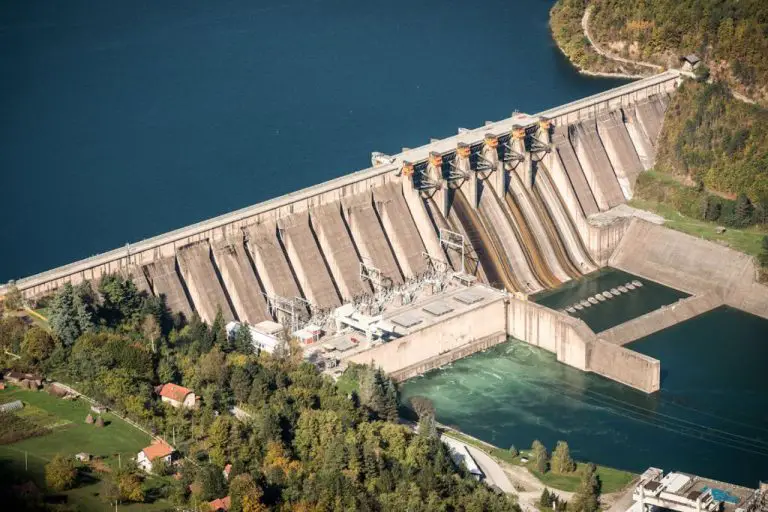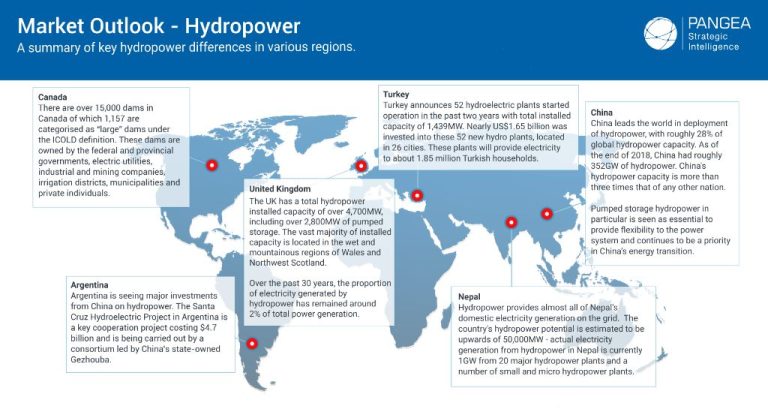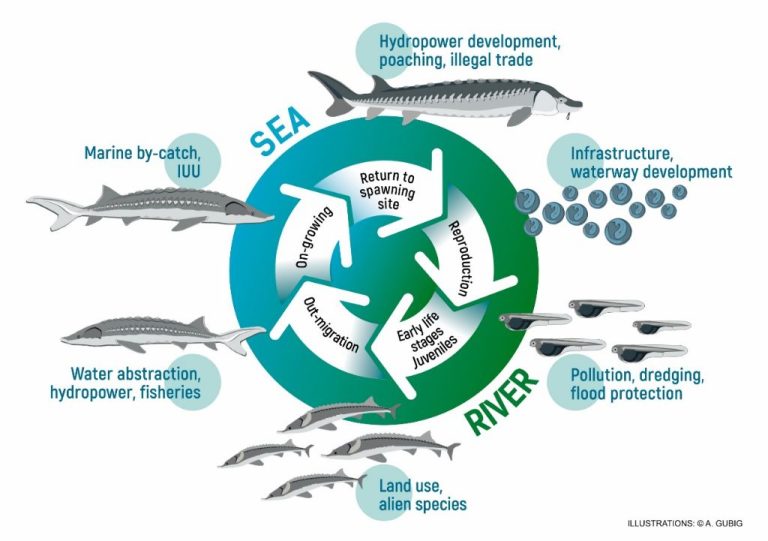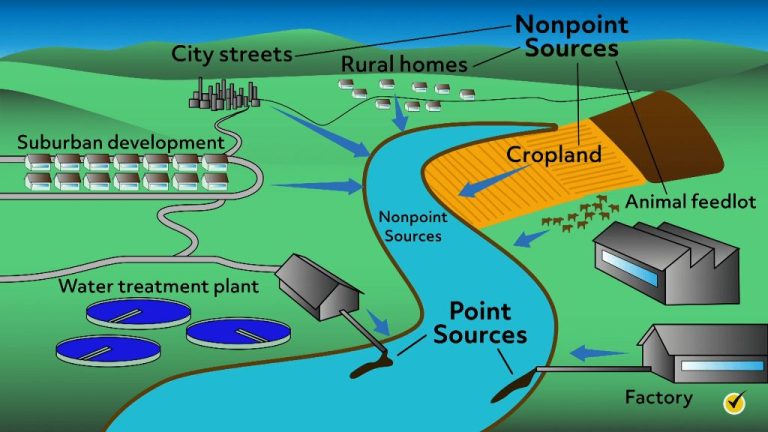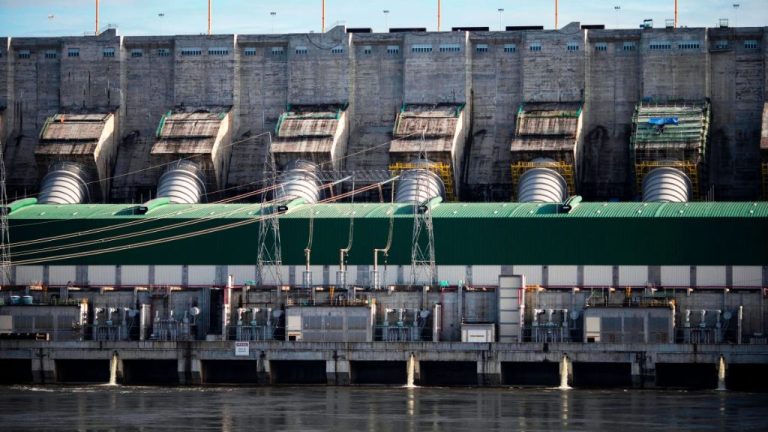Is Hydroelectric Geothermal Renewable?
What is Hydroelectric Geothermal Energy?
Hydroelectric geothermal energy is a form of renewable energy that utilizes heated water sources deep underground. It is considered a subset of geothermal energy. Geothermal energy is thermal energy generated and stored in the Earth itself. Water sources deep underground can be naturally heated to high temperatures by geologic processes like hot magma or radioactive decay. This heated water can have temperatures well above the boiling point.
Hydroelectric geothermal power plants utilize these underground reservoirs of naturally heated water to generate electricity. The heated water is pumped up wells to the surface, where the steam is used to spin turbine generators. The used steam and water are then returned back down injection wells into the reservoir to be reheated.
The underground geothermal reservoir provides a continuous and reliable source of heat to produce the steam needed for power generation. Unlike solar or wind which fluctuate based on environmental conditions, geothermal energy offers uninterrupted operation as the underground water is constantly re-heated independently.
Is Hydroelectric Geothermal Renewable?
Hydroelectric geothermal energy is considered a renewable energy source because it taps into the earth’s natural heat to generate electricity sustainably. The key factors that make it renewable are:
- Geothermal energy comes from an essentially limitless amount of heat within the earth’s core. As long as water can be pumped down to hot rock reservoirs, the heat can be captured and converted to electricity.
- Unlike fossil fuels which take millions of years to form, the heat in the earth’s core is constantly replenished by radioactive decay of minerals and residual heat from the earth’s formation. This makes geothermal a sustainable energy source.
- Geothermal power plants produce very low emissions compared to burning fossil fuels. They release less than 5% of the carbon dioxide emissions of a fossil fuel plant per unit of electricity generated.
- Geothermal fields can produce electricity constantly with over 90% uptime. This provides a reliable, renewable baseload power source.
In summary, hydroelectric geothermal taps into an enormous renewable heat resource in the earth to generate clean, sustainable electricity. With technology improvements and greater access to geothermal reservoirs, this resource could provide an increasing share of electricity generation.
Advantages of Hydroelectric Geothermal
Hydroelectric geothermal energy has several notable advantages that make it an appealing renewable energy source.
Clean Energy Source
Unlike fossil fuel power plants, geothermal plants emit little to no greenhouse gases. The steam and hot water used to generate electricity come directly from the earth, rather than burning coal, natural gas, or other fuels. This makes geothermal a clean and environmentally-friendly energy solution.
Reliable Baseline Power
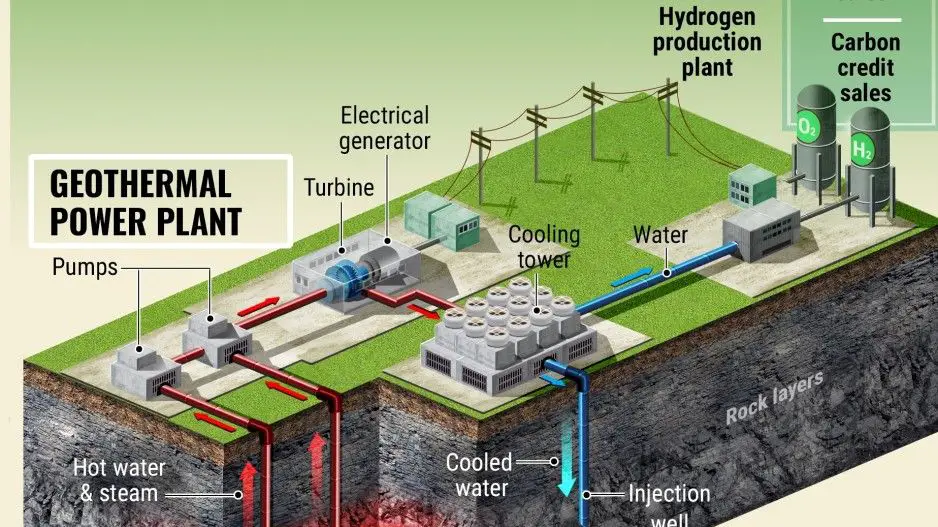
Geothermal plants can provide constant baseload power 24/7 because the earth’s internal heat is always available. This makes geothermal more reliable than solar or wind power that depend on weather conditions. Geothermal can serve as an anchor for integrating other renewables into the grid.
Low Operating Costs
Once a geothermal power plant is set up, the ongoing operation costs are relatively low compared to fossil fuel plants. There is no continual fuel cost since the earth’s heat is free. Maintenance costs are also low due to few moving parts. This makes the levelized cost of geothermal energy competitive over time.
Disadvantages of Hydroelectric Geothermal Energy
While hydroelectric geothermal energy does have some positive attributes as a renewable source of energy, it also comes with some considerable drawbacks and limitations:
High Upfront Costs
One major disadvantage of hydroelectric geothermal systems is the high upfront costs required for construction. Drilling geothermal wells thousands of feet into the earth’s crust requires expensive, specialized equipment and expertise. Building the accompanying power plants and grid connections also requires major capital investments.
Limited Suitable Locations
Hydroelectric geothermal energy is restricted to areas with adequate underground heat and water resources, limiting where it can be utilized. Ideal locations are along tectonic plate boundaries, active volcanic regions, and hot spots like Iceland and Yellowstone. The resource must also be close enough to the surface to access.
Possible Emissions
While hydroelectric geothermal emits far fewer greenhouse gases than fossil fuels, facilities can release gases like hydrogen sulfide, ammonia, methane, and carbon dioxide trapped underground. Proper maintenance and emission controls are needed to limit environmental impacts.
Hydroelectric Geothermal vs Solar and Wind
When comparing hydroelectric geothermal energy to solar and wind power, there are some key differences in capacity factors, costs, and land use requirements.
The capacity factor refers to the actual electrical energy output over a period of time compared to the maximum possible output. Hydroelectric geothermal plants generally have capacity factors of 90% or higher, meaning they can reliably generate electricity around the clock. In contrast, solar PV has a capacity factor around 20-30% due to relying on sunny daytime hours, while wind turbines have a capacity factor around 35-45% due to fluctuations in wind speeds.
In terms of costs, hydroelectric geothermal power is competitive with other forms of renewable energy. Geothermal power plants have high upfront capital costs but very low operating costs. The levelized cost of energy (LCOE) ranges from $0.04-0.10 per kWh, comparable to wind and solar. However, geothermal can provide baseload, always-on power compared to the intermittent generation of wind and solar.
When it comes to land use requirements, hydroelectric geothermal plants have a relatively small geographic footprint per unit of energy produced. While the power plant itself occupies a modest area, pipelines may be built to transport hot water long distances. By contrast, solar and wind farms can cover extremely large areas of land to generate substantial amounts of energy.
Notable Hydroelectric Geothermal Projects
There are several major hydroelectric geothermal plants operating around the world. Here are some examples:
Geysers Geothermal Complex, California
The Geysers Geothermal Complex in northern California is the largest geothermal energy facility in the world. It consists of 22 geothermal power plants with a total installed capacity of over 2,000 megawatts.
Pauzhetskaya Geothermal Power Station, Kamchatka, Russia
This geothermal power station in eastern Russia has a capacity of 90 megawatts. It uses hot water reservoirs near the Mutnovsky volcano.
Miravalles Geothermal Power Plant, Costa Rica
Located in the volcanic highlands of Costa Rica, the Miravalles plant has a capacity of 163 megawatts. Its turbines are driven by natural steam from wells.
Wayang Windu Geothermal Power Station, Indonesia
Situated in West Java, Indonesia, Wayang Windu generates 227 megawatts of electricity from geothermal energy. It utilizes hot water aquifers in the Salak volcanic field.
Nesjavellir Geothermal Power Plant, Iceland
This 120 megawatt plant near Thingvellir, Iceland produces electricity from a hot water field fed by the Hengill volcanic system.
Hydroelectric Geothermal Energy Potential
Hydroelectric geothermal energy has significant potential to meet increasing global energy demands while reducing reliance on fossil fuels. Geothermal resources that can be harnessed for hydroelectric power generation are available across the planet, both on land and offshore.
Estimates suggest the total global geothermal resource potential exceeds 200,000 megawatts (MW), with only a small fraction currently utilized. The continental United States alone has over 9,000 MW of untapped hydrothermal resources suitable for geothermal power plants.
Growth in geothermal power capacity has accelerated in recent years as technology improves and investment increases globally. Annual geothermal power generation is projected to grow at a rate of 3-4% through 2022 and beyond. Key regions driving this growth include Asia, Africa, and Latin America. With sufficient investment and policy support, hydroelectric geothermal could supply over 3% of global electricity by 2030.
While hydroelectric geothermal energy potential is enormous, growth faces challenges like high upfront costs and project site limitations. But continued technological advances and declining costs will enable this renewable baseload resource to play a major role in the global energy transition.
Policies and Incentives
Hydroelectric geothermal energy has the potential to provide clean, renewable power at scale. However, high upfront costs have hindered widespread adoption. Governments around the world have implemented various policies and incentives to promote hydroelectric geothermal development and utilization.
Direct financial incentives like tax credits, cash grants, and rebates help offset installation costs for residential and commercial hydroelectric geothermal systems. Many local and state governments offer additional rebates and incentives on top of federal tax credits to further encourage adoption.
Federal renewable energy standards and state-level renewable portfolio standards ensure continued investment in hydroelectric geothermal by requiring utilities to obtain a percentage of their electricity from renewable sources. Feed-in tariff policies can guarantee favorable rates for hydroelectric geothermal electricity fed into the grid.
Streamlining regulatory and permitting processes for hydroelectric geothermal projects can help reduce burdensome soft costs. Governments also invest directly in R&D and pilot projects to drive down costs and improve technologies.
Sustained policy support will be crucial for realizing the vast carbon-free energy potential of hydroelectric geothermal worldwide. With the right incentives and investments, hydroelectric geothermal can play a major role in the global transition to renewable energy.
Environmental Considerations
Hydroelectric geothermal energy does have some potential environmental impacts that should be considered. Two main areas of concern are the impact on wildlife and habitat, and water usage issues.
The reservoirs created by hydroelectric dams can negatively impact local wildlife habitats. Flooding land to create the reservoir destroys existing ecosystems and can disrupt or destroy wildlife migration routes and breeding grounds. The fluctuations in water levels in the reservoirs can further disrupt habitats. Fish populations can also be impacted by changes in water flow, temperature, and oxygen levels caused by hydroelectric dams.
Hydroelectric power relies on the availability of water resources, which means it is in competition with other users of water such as agriculture, industry, and human consumption. Over-allocation of river water for hydroelectric use can negatively impact downstream ecosystems and communities. Additionally, water lost through reservoirs to evaporation can be significant in arid regions that already suffer from water scarcity.
Proper planning, mitigation efforts, and managing tradeoffs can help reduce the environmental impacts of hydroelectric geothermal energy. But the effects on local wildlife and habitats, as well as water resource usage, should be carefully considered when developing hydroelectric geothermal projects.
The Future of Hydroelectric Geothermal
Hydroelectric geothermal power has significant potential for growth and playing an expanded role in the global energy mix going forward. New technologies are emerging that can increase the efficiency and viability of geothermal plants. One such technology is enhanced geothermal systems (EGS), which involves pumping water underground at high pressures to fracture hot rocks and create new pathways for water circulation. EGS has the potential to unlock geothermal resources in areas that lack natural reservoirs. Additionally, hybrid power plants that combine geothermal with solar PV or biomass sources can enable more consistent and reliable renewable power generation.
According to projections by the International Energy Agency, global geothermal power capacity could grow from around 14 gigawatts today to close to 140 gigawatts by 2050 under an optimistic scenario. Realizing this growth will require policies and investments supportive of geothermal development. With sufficient support and adoption of best practices, geothermal can provide steady baseload renewable energy to complement more variable resources like wind and solar. Key geographies with untapped hydrothermal potential include parts of Africa, Asia, Central and South America. Overall, the unique attributes of geothermal position it well to play an important role in enabling a cleaner global energy system this century.

